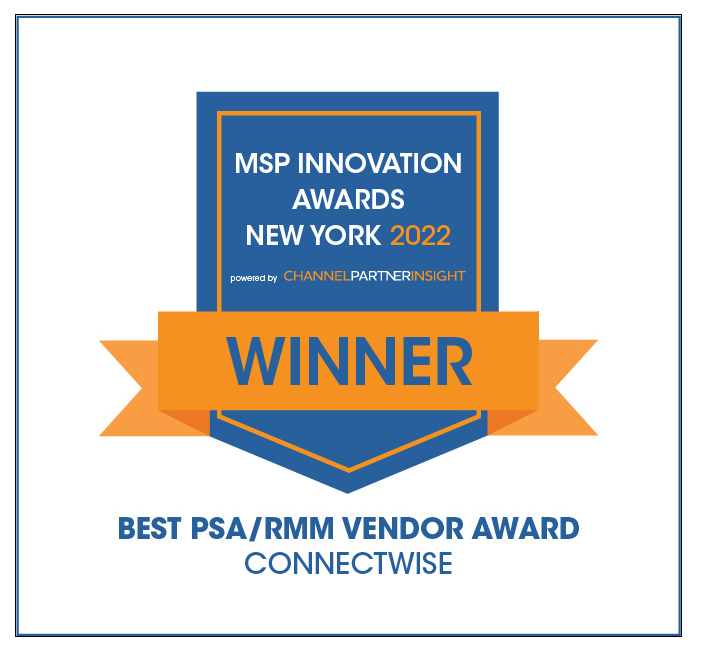3 Must-have operational maturity traits for growth
If you put 100 service providers into a room, how would you measure their success? When it comes to operational maturity, you can have large enterprises with low OML in the same way you can have small service providers with high OML. Whether you’re just starting your MSP or have been around for a while, you can always work to improve operational maturity to get closer to—and reach—your goals.
Operational maturity is a means of determining how your company’s decisions, processes, and actions are aligned to the highest potential outcome of your efforts. It’s your ability to scale quickly and efficiently while also growing your EBITDA. Best-in-class service providers are in the top 25% and are a great resource to understand which best practices service providers should implement to win in a competitive landscape.
There are 39 OML traits that all high-performing solution providers master across strategy, sales, service, finance, and incentive compensation. Each OML trait has a different ROI based on various factors, including the cost to implement, difficulty in implementing, risk if not implemented, speed of impact, impact on profit, the impact of quality, and speed of implementation.
By measuring the ROI weight of traits, these are the three must-have OML traits: price increase management, driving technology standards, and selling pre-contract assessments. Let’s dive into how you can prioritize each OML trait to improve your operational maturity level.
Price increase management
Charging too little may help close the deal, but ultimately, it's an unsatisfactory relationship. The MSP has too few resources to apply to doing a good job, and the client doesn't get good support. As a result, too many of these deals end too soon.
MSPs or solutions providers that don't increase their prices are not setting a good standard. Beyond leaving money on the table, if you think about the customers that you want to bring on, you always want to work with customers that appreciate the technology. You should want to partner with businesses that are investing in their future with what you offer. Those are the ones that are going to utilize you in the most effective way.
Low OML perspective: We try to keep our price increases as infrequent and as small as possible. Mostly, we roll them out to new clients, not existing ones.
High OML perspective: Our recurring contracts have annual increases, which keep us in their target gross margin range. At the same time, the prices offered to new customers are increased as well.
The fact is, if you don't raise your prices, you're going to work yourself out of business. Right out of the gate, you can let your prospects know during the initial sales cycle that recurring contracts have an annual increase. This way, they're not surprised and are expecting it. And then, you're also weeding out those individuals that don't have the respect or appreciation for the technology and how it impacts their business. If they don't agree to this, then you don't have to sign them—it's just plain and simple.
Driving technology standards
The key to high-quality growth and profitability is minimizing technical complexity. This enables great customer and employee experience, retention, and referrals; high sales confidence; fewer and lower-cost people. Higher-performing MSPs get standards in place right away.
Similarly to accepting price increases, high quality and profitable customers will be ok with investing in technology. Their willingness to invest in technology is a good indicator that they’re going to stick with you longer. Because of these technology standards, they’re also going to get a better experience.
Low OML perspective: It seems at least counter-intuitive to require our clients to be standardized from the start, possibly suicidal. Instead, we use “point solutions” tools that we integrate.
High OML perspective: We’ve forgotten why we thought we couldn’t be fully standardized across our client base. We partner with vendors who have the most unified toolset possible.
You’ll also gain greater efficiencies across the spectrum because now your sales team won’t have to go out and have to understand eight different backup solutions or 19 different security offerings. By standardizing across your client base, you’ll improve their results and it sets you up for success as well. You’ll be able to invoice accurately, unlock new efficiencies, and offer a better customer experience—it’s a win-win all around.
Selling the pre-contract assessment
Doing a paid, full technical, and business alignment assessment before quoting managed services enables the highest differentiation, close rate of desirable customers, revenue per account, and profitability. Higher-performing MSPs do this on more than 90% of opportunities.
The truth is your customers likely have no idea what is in their office. They don't know what's in their four walls, what's out of their four walls, and so really, how can you create an effective quote? This isn't just a technical assessment but allows you to query the executive's one at a time about their needs, variety, and plans for the company, allowing you to build a more successful, less risky relationship with greater understanding. You're also able to propose the richest offering because you've spent the time uncovering what they see as value and can explain to them what you see as value. All this is under the guise of doing a good, comprehensive assessment.
Low OML perspective: No need. We do a quick but good technical assessment at no cost and quote successfully from there.
High OML perspective: We do a paid technical and business alignment on 95% of our opportunities before quoting managed services.
Selling a pre-contract assessment can, again, weed out those customers that don't align with what you're trying to accomplish as a managed service provider. This allows you to set the customer up for success as it aligns directly with the standardization of your hardware and software packages. The pre-contract assessment is where you can bring in a little bit of additional revenue without having to upsell a customer, and it's going to accomplish so much more for you on the back end.
Conclusion
Success comes when you decide to implement best practices, you decide how you want to move forward to either achieve low OML or high OML. These three OML traits are interconnected to make the others easier to implement. Once you get started, consistency is the key to success. You might hit a few bumps in the road or encounter a prospect who isn’t willing to pay for a pre-contract assessment—this is all a part of the process. You want to work with people who find value in your offerings. Those are the best customers to have and will speak highly of your services to other prospects to help you continue to grow and reach your goals.


